Circuit Driving in the Taycan Turbo GT Weissach Package! Impressions from Fuji Speedway
公開日:2025.03.29
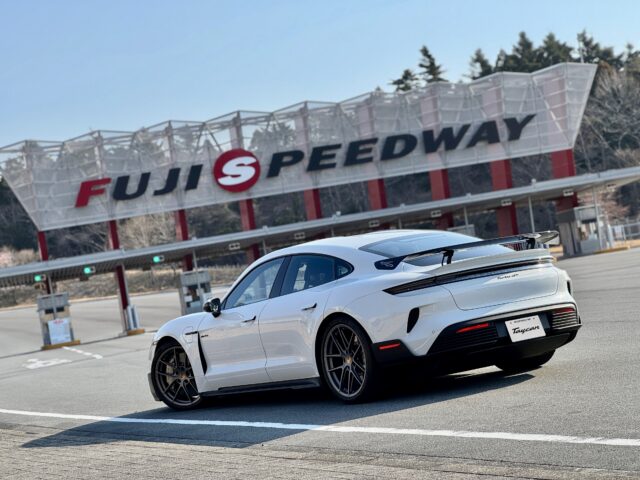
コンテンツ
After Getting the Taycan Turbo GT Weissach Package
After driving about 800 km since purchase, I took the Taycan Turbo GT Weissach Package to the circuit for the first time.
And it all comes down to this one phrase — “I’m really glad I bought it.”
My wife even said it was the most impressive Porsche she’s ever driven, and I couldn’t agree more.
However, public opinion about the Taycan is somewhat mixed.
Due to Porsche’s sales strategy, some owners feel they were “forced to buy” just to build track records, leading to negative feelings.
Those people tend to dismiss it with superficial judgments like “It’s just fast” or “It’s heavy.” On the other hand, those who bought it with an open mind or who genuinely engage with the car have become surprisingly passionate fans of the Taycan.
I know someone who bought the Taycan as a condition for purchasing a GT3 Touring, but now barely drives the GT3 and uses the Taycan almost exclusively. They rave, “There’s no car easier to drive than this,” and are already set on buying another Taycan next.
Also, Takuro-san, a frequent test driver on this blog (Twitter: @911_carreraT), borrowed a Taycan Cross Turismo 4S as a loaner and passionately told me at a family restaurant for about two hours that “I won’t be able to drive other Porsches anymore” (laughs).
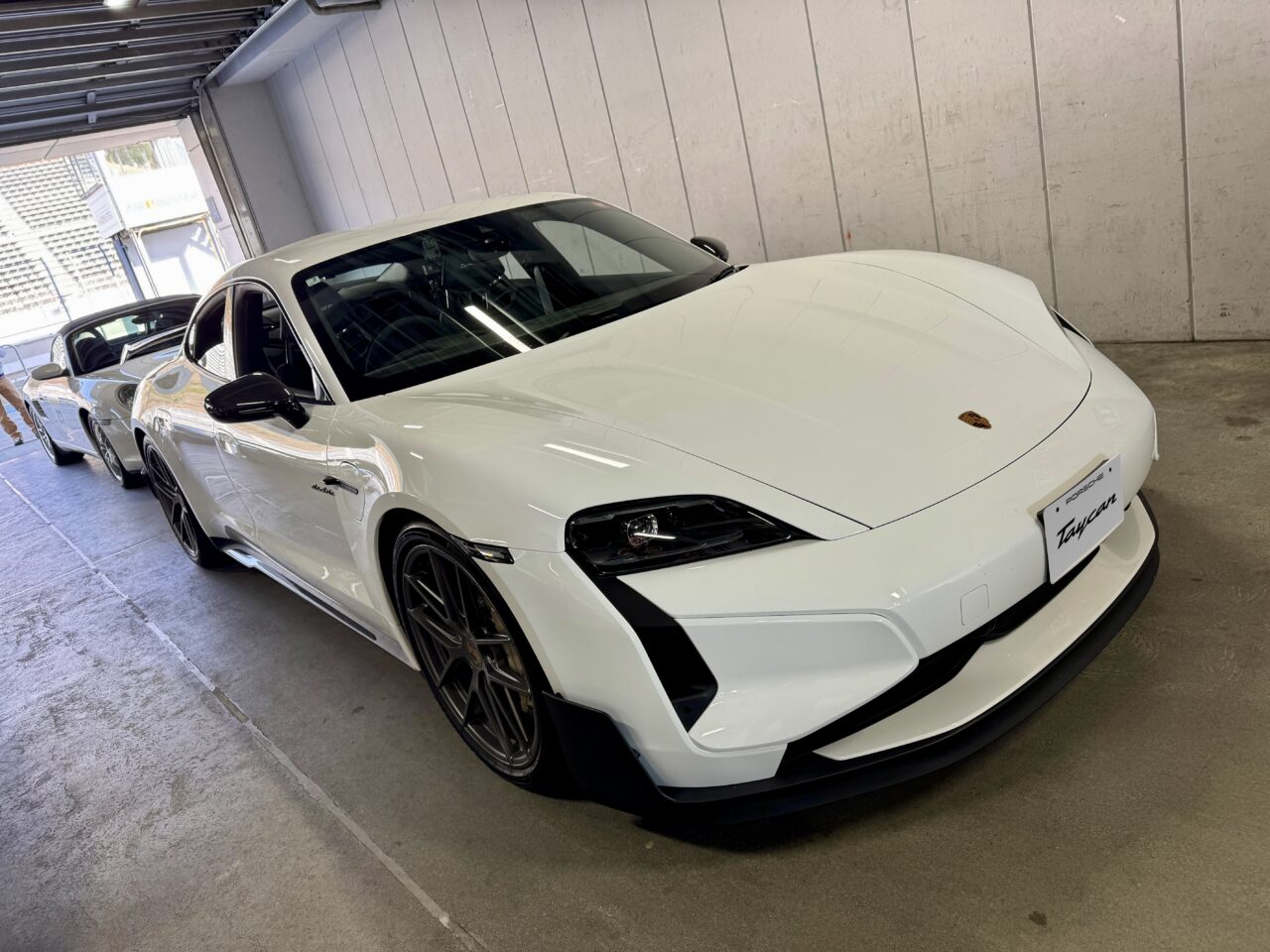
The Road to Fuji Speedway — Outstanding High-Speed Stability
We headed from Kansai to Fuji Speedway with my wife’s Taycan Cross Turismo 4S.
The stability and flatness on the highway were on a level I’d never experienced before. It far surpassed the GT3 Touring, which I previously thought was the best on the highway, and I can confidently say it’s “the best in the universe.”
Before departure, I was worried about driving long hours in bucket seats, but it turned out to be no problem at all. In fact, thanks to the bucket seats, I could sit with perfect posture, keeping my pelvis properly aligned, and after 5 to 6 hours of driving, I didn’t feel tired—instead, I even felt like my back pain was easing. Of course, this depends on body type, but for me, these seats were ideal.
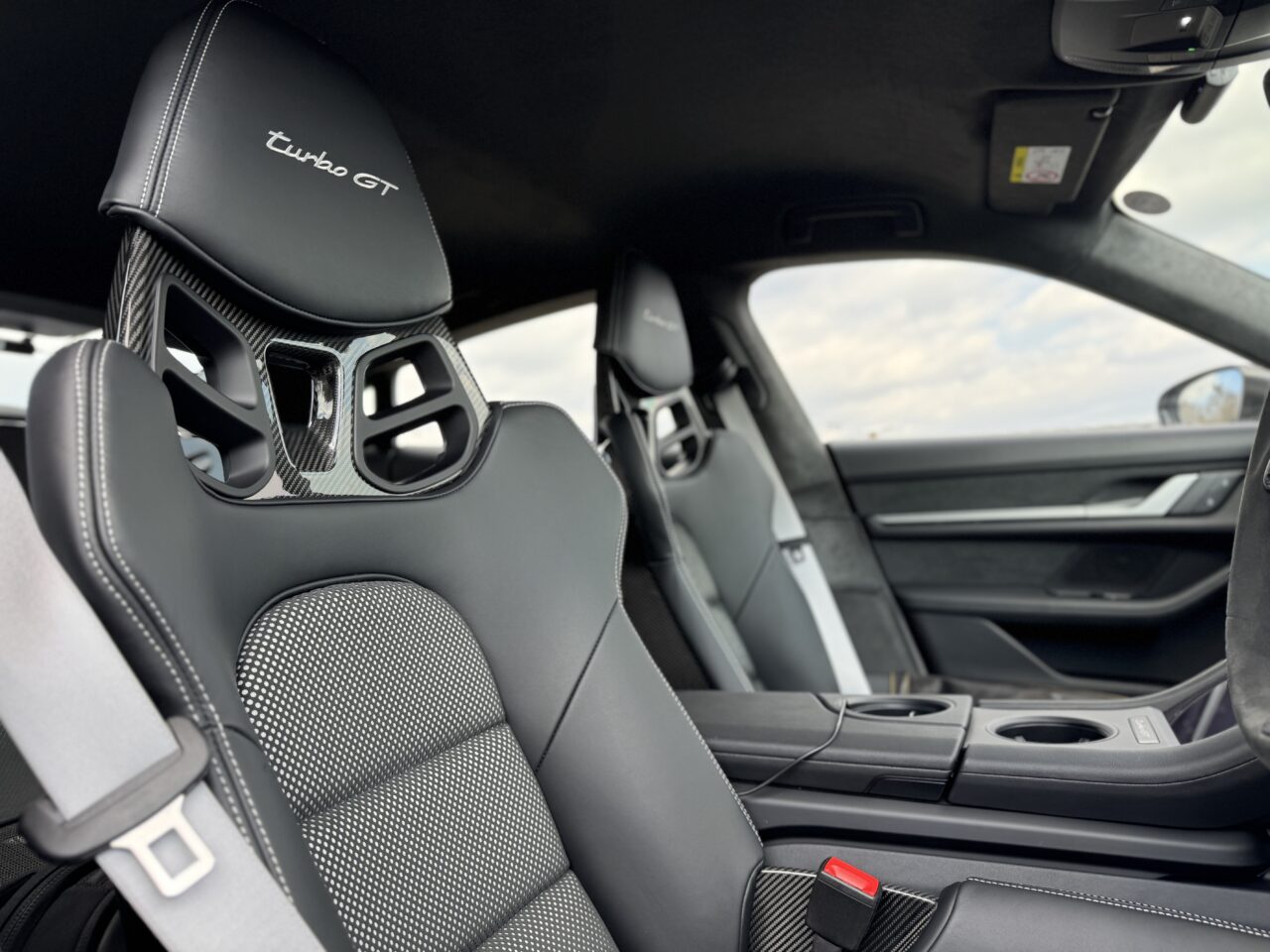
Phenomenal Performance on the Circuit
This time, I participated in an event hosted by 911Days magazine at Fuji Speedway.
I started cautiously in the morning. Arriving with about 85% charge, I did some warm-up laps before pushing harder.
The acceleration was overwhelming.
Even when driving alongside other Porsches, if I didn’t adjust the throttle, I’d quickly catch up to the car ahead. Among 911s, Caymans, and Boxsters, I’d close the gap rapidly on straights after corners and nearly overtake them. Because the speed difference was so great, overtaking felt risky, so I drove more cautiously.
ブログの読者の方に撮って頂いてました🙇#タイカンターボGTヴァイザッハパッケージ pic.twitter.com/KdcQo9vfz0
— Hiro@ポルシェがわが家にやってきた (@boxster_gts) March 23, 2025
The cornering ability was also very high. The Turbo GT Weissach Package turns incredibly well.
However, it doesn’t quite handle lateral G-forces as well as the Cayman or 911. It feels about like a 981 Boxster. Still, despite its weight, the car feels almost weightless. It has a nimbleness that lets the front end slip in smoothly—there’s no feeling of struggling to move it.
That said, on long, high-G corners like 100R, the centrifugal force pushing outward is stronger due to the car’s weight, and the tires begin to lose grip slightly earlier than other Porsches. The Taycan Turbo GT really makes you want to put on cup tires.
Sections like the Dunlop corner to corner 13 at Fuji are beautifully handled.
Its agility is flawless, and there’s no sense of it being a heavy car. The acceleration on the straight after the final corner is overwhelming—you just press the accelerator and experience incredible acceleration. Strangely, it doesn’t feel like you’re going fast; it just feels like you’re closing in on the car ahead at an abnormal speed. Whether the car ahead is a GT3 or an RS, you can overtake with a massive speed advantage.
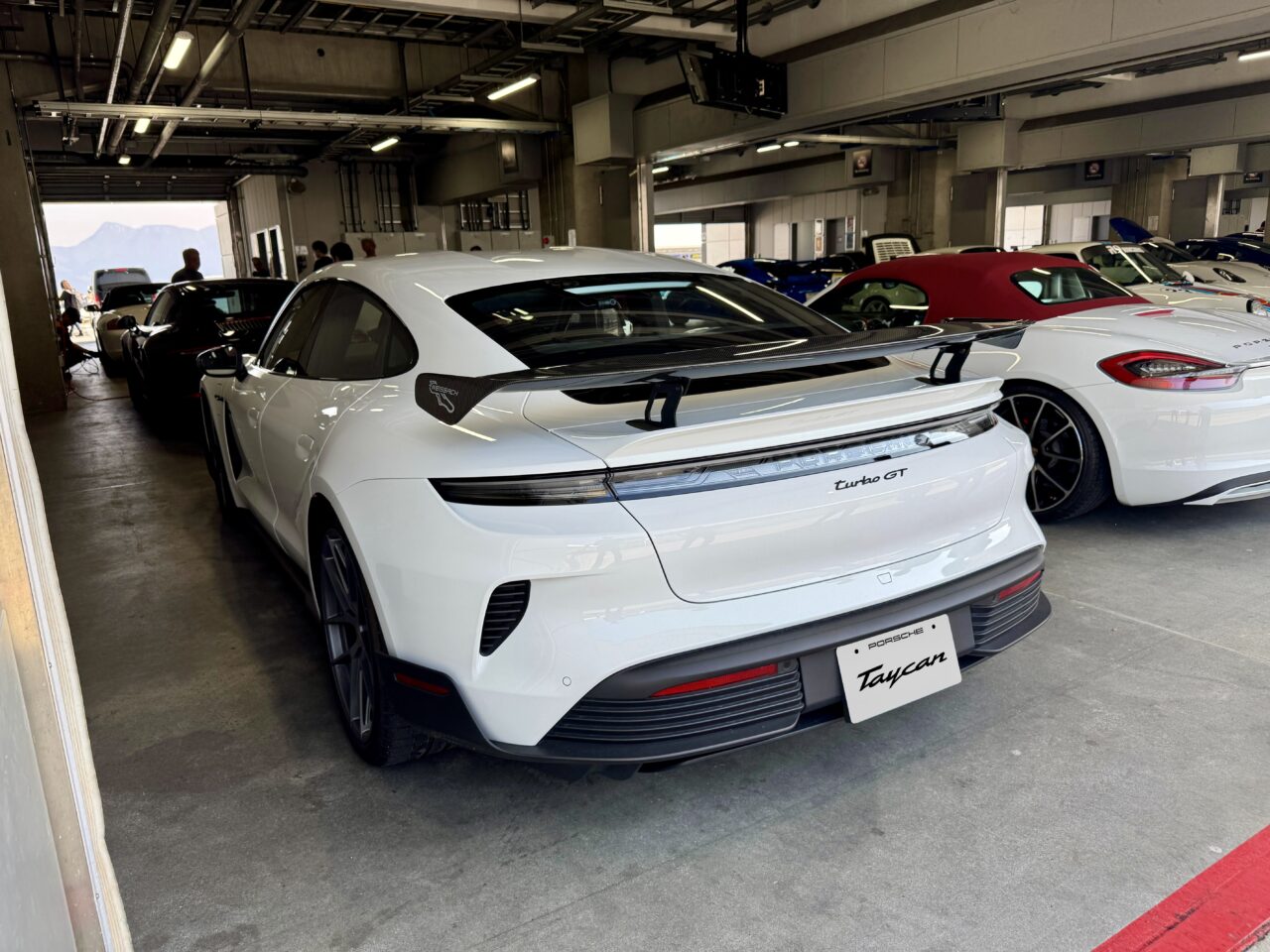
Beyond 300 km/h and Exceptional Braking Performance
The highest speed confirmed during this circuit run was 302 km/h on the speedometer.
Breaking the 300 km/h barrier in my own car for the first time was a deeply moving experience. It reached about 290 km/h quickly, then climbed more gradually to 302 km/h. Even at those speeds, it was rock solid with astonishing stability. The downforce worked perfectly, and I felt the car firmly pressed to the road.

Full braking in action. The monitor shows red for physical brakes and green for regenerative braking ratio.
Braking into the first corner was also impressive.
You might imagine that a heavy car’s brakes wouldn’t be effective, but actually, it’s quite the opposite. Starting to brake gently just before 250 meters from 300 km/h was enough to slow down comfortably without needing full brake pressure. This is largely thanks to regenerative braking, which activates when pulling the left paddle even with the accelerator off.
According to the monitor, when braking fully, about 70% is physical braking and 30% regenerative. Both the feel and stopping distance are on par with a 911’s braking performance.
Fine-Tuning and Improved Heat Management
Tire pressure settings are crucial.
The Turbo GT has a setting called “Performance Pressure,” which corresponds to “Comfort Pressure” in other Porsches. However, this felt a bit too high, so I lowered it by about 0.3 to 0.4 bar. I adjusted it to about 2.5 to 2.6 bar warm. Considering the car’s weight and the fact that it can reach 300 km/h, I judged lowering it further would be risky.
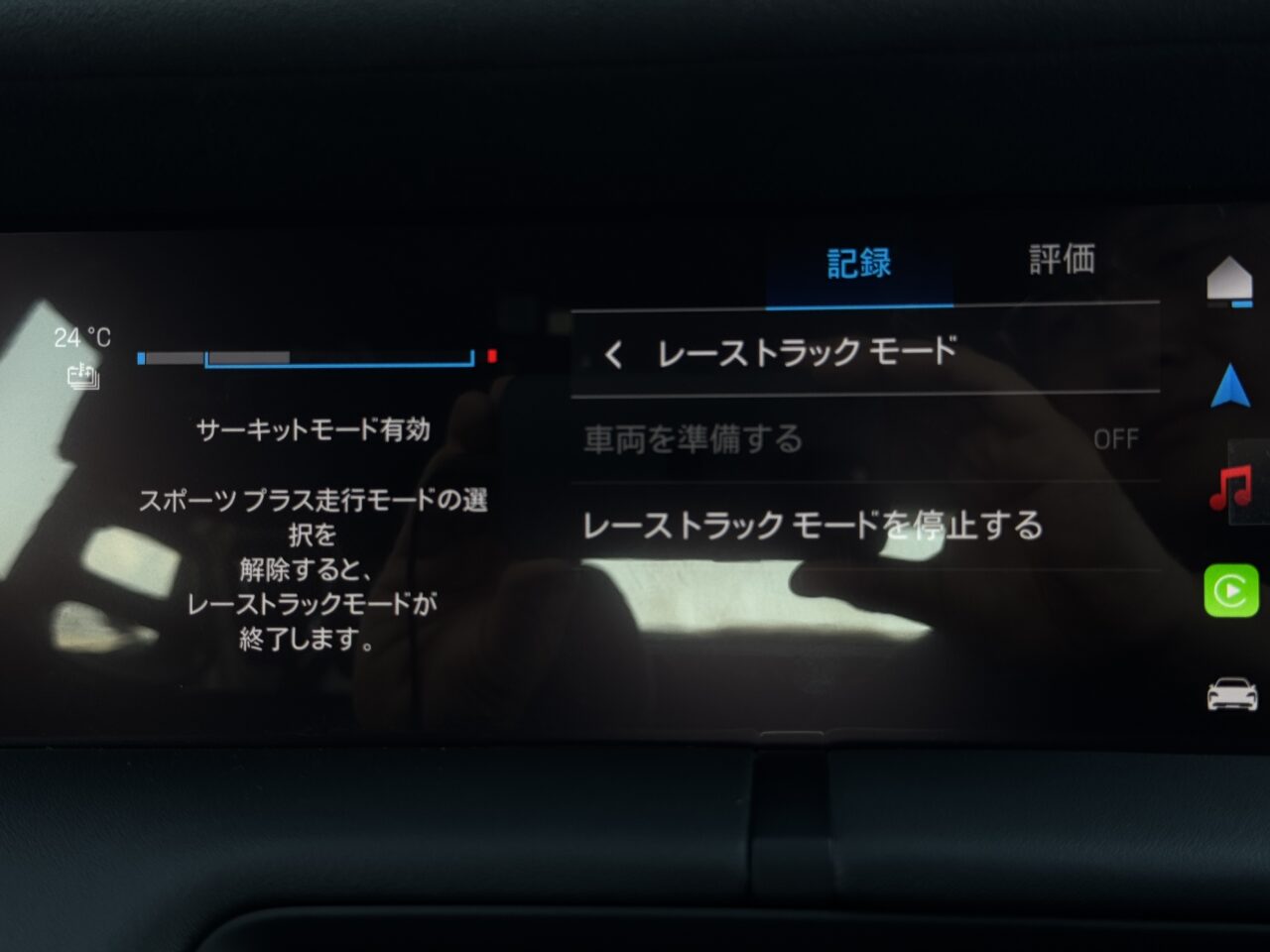
Also, there’s a “Race Track Mode” within the Sport Chrono package that preheats the battery and drivetrain before circuit driving. This raises battery temperature and improves regenerative braking efficiency. Earlier models had issues where battery temperature would get too high during circuit runs, causing performance drops, but the Turbo GT showed no such warnings or problems. Heat management has clearly evolved.
By the way, battery consumption was about 30% after the morning session. If I pushed harder for longer, it might drop 40–50%.
今回は午後が中断やピットに入った関係で、この午前の様子見ラップが結局ベストとなってしまいました😓
タイカンターボGTの音と加速力だけでもご堪能ください🙇#タイカンターボGTヴァイザッハパッケージ pic.twitter.com/zTR9cw4A1E— Hiro@ポルシェがわが家にやってきた (@boxster_gts) March 24, 2025
Rediscoveries on the Way Home and the True Value of the Taycan Turbo GT
After the circuit, we took the winding roads over Mikuni Pass toward Lake Yamanaka.
There, it showed agility “unbelievable for a Taycan.” It climbed the winding roads with agility close to a GT3. The regular 911 models simply can’t compete with the Taycan Turbo GT. It’s in a league of its own.
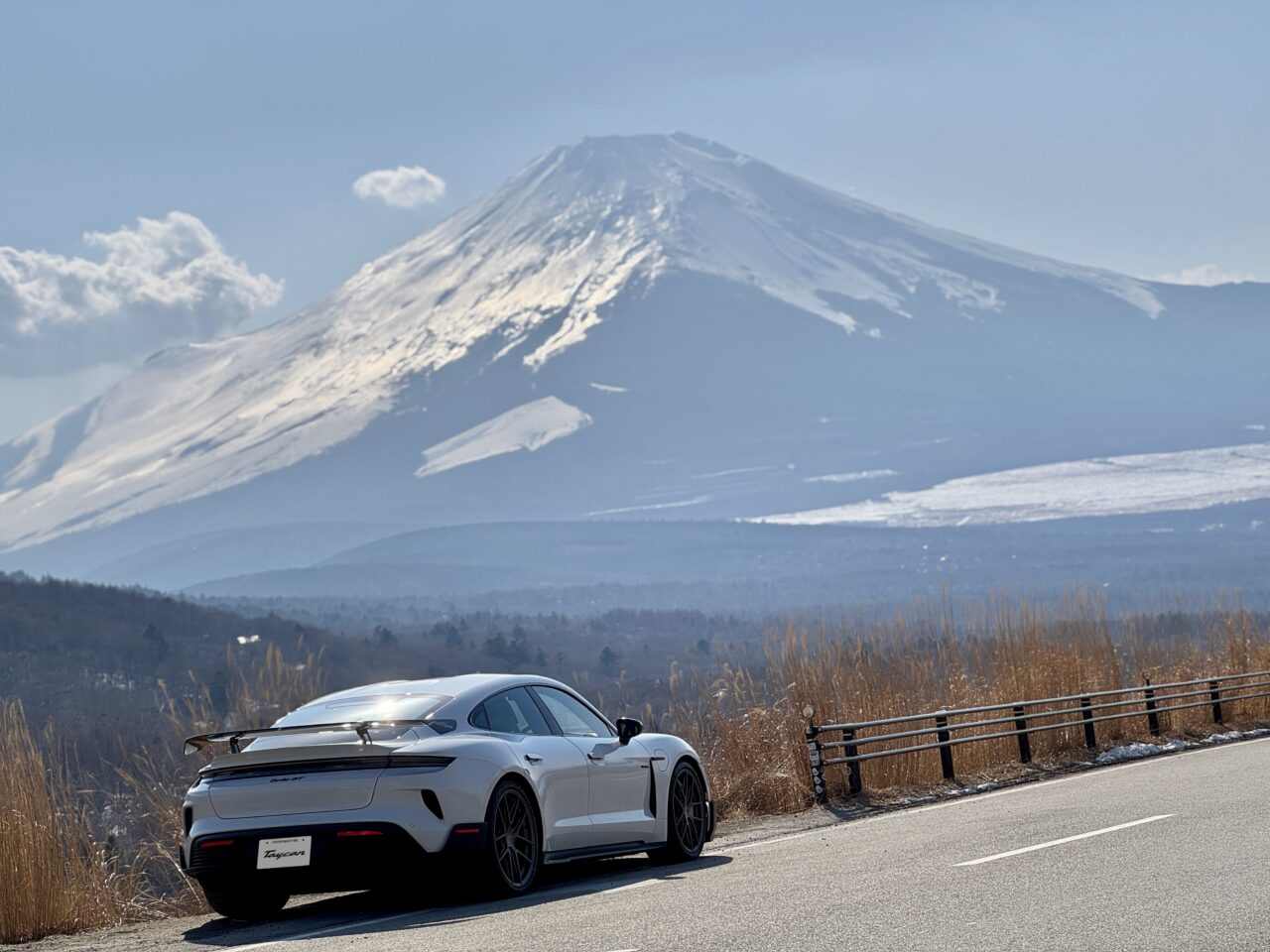
The smoothness unique to electric vehicles is also remarkable.
Without gear changes and thanks to the electric motor’s characteristics, acceleration and deceleration are continuous and seamless. This makes driving on winding roads especially enjoyable. On the way back on the highway, it maintained the same incredible stability as on the way there. Usually, after driving from Fuji Speedway to Kansai, you’d feel tired and want to rest quickly, but with this car, I felt no fatigue and was ready to keep going.
The Taycan Turbo GT is a car with unmatched traits: high performance yet comfortable and fatigue-free.
Whether on the circuit, mountain roads, or long-distance drives, it delivers top performance in every scenario. There’s no other car as versatile. If you own a Taycan Turbo GT, I highly recommend experiencing its true value on long drives and at the track.
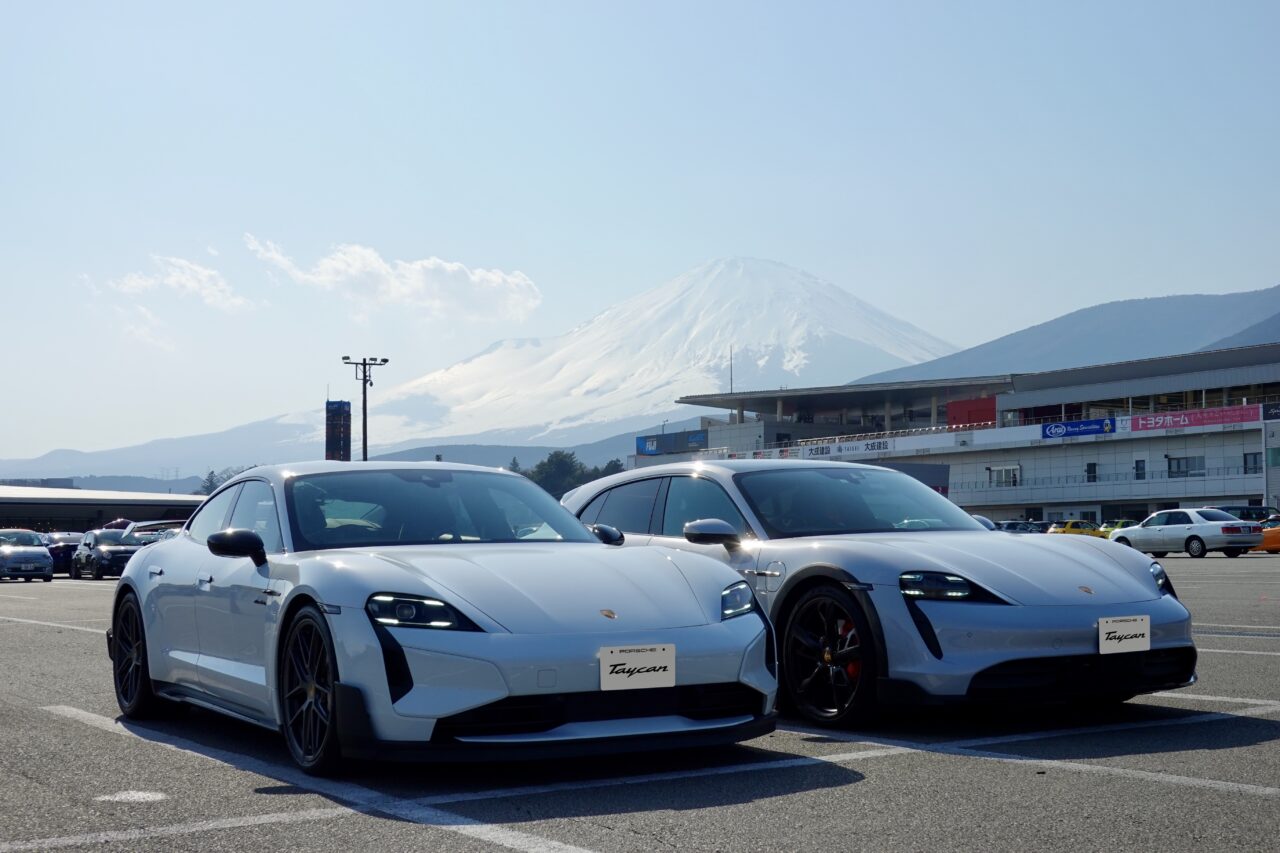
このブログが気に入ったらフォローしてね!


Comment ( 0 )
Trackbacks are closed.
No comments yet.